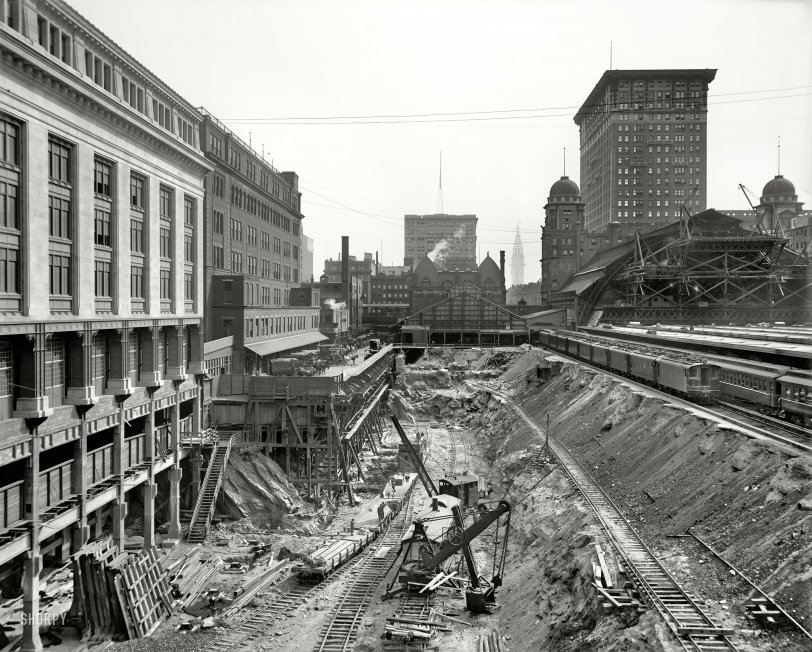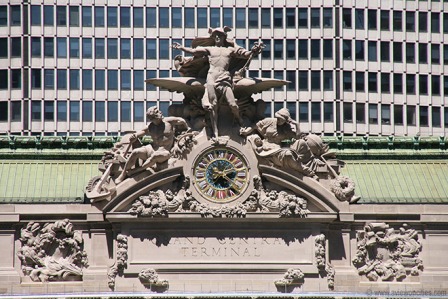


Framed or unframed, desk size to sofa size, printed by us in Arizona and Alabama since 2007. Explore now.
Shorpy is funded by you. Patreon contributors get an ad-free experience.
Learn more.

- Roll your own
- Rugged and real!
- A Charles Purcell - Mama Cass Connection
- Uncle SAAM
- Obfuscation
- One Chocolate Soldier rode away
- Victor Marquis de la Roche
- The Little House Across Way ...
- Vanderbilt Gates
- Vanderbilt Mansion
- You can still see that gate
- Withering heights for me
- So Jim,
- Top Heavy
- Re: Can't Place It.
- Bus ID
- Since you mention it
- The White Pages ?
- Moonlight Tower
- 1907?
- Fire(men) and Water
- Can't Place It
- Can anyone
- Wings
- Where's Claudette and Clark?
- Overbuilt Rolodex
- One song
- Give Me Wings Please!
- PRR
- Pinball Wizards
Printporium
Grand Central: 1908

New York circa 1908. "Excavations for N.Y. Central station." Grand Central Terminal under construction as its predecessor, Grand Central Station, comes down next door; in the far distance, the Metropolitan Life tower rises. 8x10 inch dry plate glass negative, Detroit Publishing Company. View full size.
Stations of the strict
There is a difference between "station" and "terminal" when discussing railroad related matters;
A station is a stop along the way and a terminal is the "end of the line." So, both Pennsylvania and Grand Central in Manhattan are terminals because there is no service beyond them. New Yorker's Yorkers such as myself have always referred to at least Grand Central as a station even though the word "terminal" is etched very clearly in its granite facade.

No No. 7
The elevated train was a shuttle operating on 42nd St between the Third Ave el and Park Avenue, where passengers descended to street before entering Grand Central. Began 1878, electrified 1903, and discontinued 1923. The Flushing Line (7) has always been subterranean in Manhattan.
No. 7 Train
I'm guessing that the elevated station visible on 42nd Street is the forerunner of what is now the underground Number 7 train. Did it run all the way to Jets Stadium back then?
Steam shovel
The steam shovel in the immediate foreground was invented by William Otis for work in railroad cuts. Its main limitation was that it could swing through only about 180 degrees. It would have been pushed ahead of a locomotive and basically dug its way along the cut. New track would have to be laid as it progressed. Later shovels had caterpillar type treads and could rotate 360 degrees. Note the "crowding engine" up on the main mast. The crowding engine required a separate engineer usually and his control station would have been up with the crowding engine where he would have been in charge of working the dipper. The other steam powered device in the picture is not a shovel, but is a crane or hoist for lifting heavy materials. The steam shovel is probably awaiting some gondola or hopper cars as it has no place to deposit any soil it might remove. This probably explains why no engineer/operator is visible at the crowding engine.
Ground level - improved
The building at the far left is the Grand Central Station Post Office, which was built at pretty much the same time as the new Grand Central Terminal (begun 1906, completed 1910). It was designed to interact with the new train level for the terminal, as well as with the raised roadway and truck ramps that were built around the outside of the terminal, which would take the place of the stub of a ground level street seen in the background.
The View
This is an afternoon view facing south, probably in the summer of 1908. Under construction in the distance is the Metropolitan Life Insurance Tower at 25th Street and Madison Avenue. It was finished in 1909. The two cupolas flank the entrance to the station on the north side of 42nd Street and face south down Park Avenue South. Low buildings on Park Avenue South can be seen just below the Met Life tower.
A Little Geology, Please.
Is there a geologist out there that can tell us the geology of the area, the age and type of rock that they are removing in this photo?
Wow.
So basically what we're seeing here is how they dismantled one station, while building another on the same location, and kept the trains running all at the same time. Amazing.
Excavators
I grew up calling them "steam shovels," although I never saw one actually powered by steam. I'm not sure what to call them now. Of course, I grew up calling refrigerators "iceboxes," but we had one of those when I was very small and the war was just over.
Where was ground level?
The section of street at the extreme left has been excavated right back to the basement levels of the building. But, looking at the existing, as yet unexcavated street, the pre-dig ground level does not seem to correspond to the floors in the building which has been opened up to the pit. You can see a street level door on the next building leading to the former street (now in mid-air) which is about a third of the way down into the basement. It almost looks like the building on the extreme left was raised up half a story.
Station vs Terminal
We took a tour of Grand Central Terminal a few years ago and the tour guide made a specific point of telling us that it is called "Terminal" and not "Station," explaining that "Grand Central Station" referred to the post office located there. He never mentioned that there had been a Grand Central Station at one time. It's a beautiful building with a great history.

























On Shorpy:
Today’s Top 5